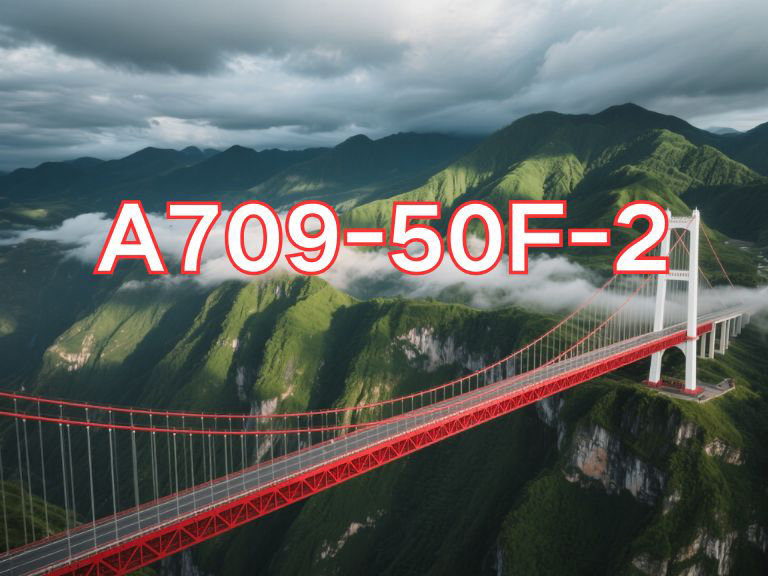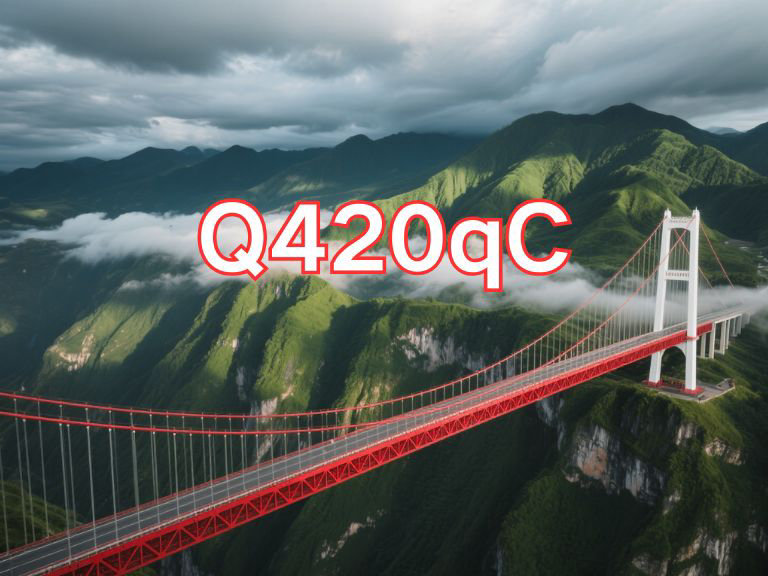

A709-50T-2
A709-50T-2 is a high-strength, high-toughness structural steel plate designed for bridges and heavy-duty structures operating under severe environmental conditions. It is specified under the American Society for Testing and Materials (ASTM) standard ASTM A709/A709M. The designation is interpreted as follows: "A709" indicates compliance with the Standard Specification for Structural Steel for Bridges; "50" denotes a minimum yield strength of 50 ksi (approximately 345 MPa); the suffix "T" signifies that the steel is produced using the Thermomechanically Controlled Process (TMCP), which refines grain structure through controlled rolling and cooling, achieving high strength and excellent toughness without significantly increasing the carbon equivalent; the "-2" refers to Grade 2, requiring Charpy V-notch impact tests to be passed at an extremely low temperature of -50°F (-45°C), with a minimum average absorbed energy of 27 J, ensuring resistance to brittle fracture in cold climates.
A709-50T-2 is primarily used in highway bridges, railway bridges, overpasses, and major transportation hubs in cold regions or areas experiencing extreme winter conditions. Typical applications include main girders, cross beams, bridge tower connections, and welded joint zones. Thanks to the TMCP manufacturing process, the steel features a fine-grained microstructure, offering not only high strength but also superior weldability and excellent heat-affected zone (HAZ) toughness. This reduces preheating requirements during welding, lowers construction difficulty, and improves welding efficiency and quality.
Key characteristics of this steel plate include an optimal balance of strength and toughness, outstanding low-temperature impact performance, excellent weldability, strong fatigue resistance, and the ability to meet stringent safety and durability requirements without additional heat treatment. Its carbon equivalent (CEQ) is strictly controlled, minimizing cracking susceptibility during field welding.
The current applicable standard is ASTM A709/A709M-23, titled Standard Specification for Structural Steel for Bridges. Published in 2023, this latest version provides comprehensive requirements for chemical composition, mechanical properties, impact toughness, through-thickness properties, and manufacturing processes, with special emphasis on performance validation for TMCP-produced steels.
With growing demand for high-performance, long-service-life bridge structures in North America, A709-50T-2 has become a preferred material choice for bridge construction in cold climates.

Ultrasonic Testing (UT)
A key non-destructive testing technique that uses high-frequency sound waves to detect internal flaws in steel plates. The probe emits sound waves, which reflect when encountering defects such as cracks or inclusions. The receiver captures the echoes, enabling precise determination of defect location and size. With high sensitivity, strong penetration, and fast inspection speed, UT effectively ensures internal quality, widely used in the production of heavy plates, pressure vessel plates, and other high-end products to guarantee safety and reliability.

Magnetic Particle Testing (MT)
A common surface inspection method that magnetizes the workpiece, causing leakage magnetic fields at surface or near-surface defects like cracks or inclusions, which attract magnetic particles to form visible indications. Simple to operate and highly sensitive, MT is suitable for rapid inspection of surface and near-surface flaws in ferromagnetic materials, widely used for online or offline inspection of plate edges, ends, and welds, ensuring product quality and safety.

Penetrant Testing (PT)
A non-destructive method for detecting surface-breaking flaws. A penetrant liquid is applied to the cleaned steel surface, allowing it to seep into defects such as cracks or pores. After removing excess penetrant, a developer is applied, causing the trapped penetrant to bleed out and form visible indications. Simple and cost-effective, PT is suitable for inspecting surface defects in various non-porous materials, commonly used for welds, castings, and complex components, effectively ensuring surface quality of steel plates.











